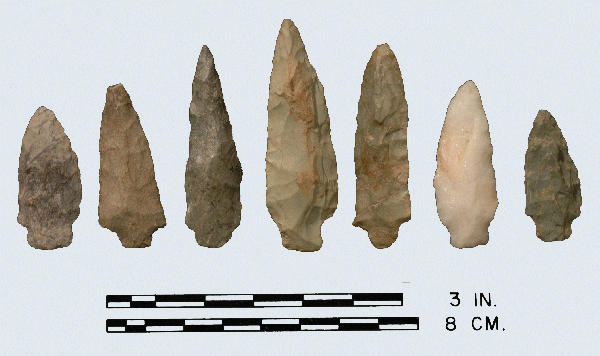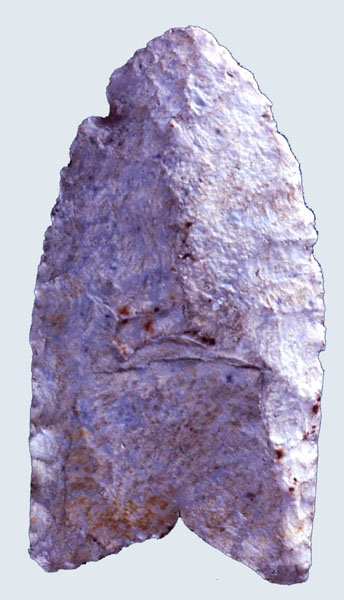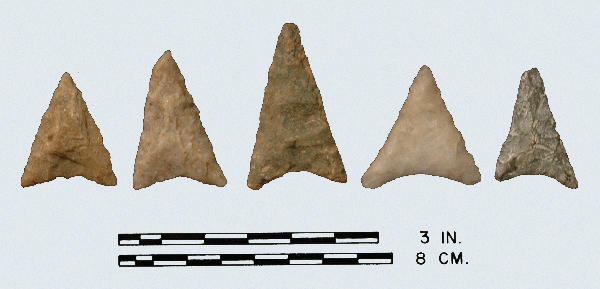
Will’s Cove: rhyolite, tuff, tuff, tuff, tuff, quartz, chert.
Type Square Early Woodland
Defining Attributes
The Will’s Cove point is a long, narrow point, characterized by a small square stem, nearly square shoulders, slightly excurvate blade, collateral flaking, and median ridges on each face of the blade.
Chronology
The Will’s Cove point has never been radiocarbon dated, but probably dates to the Early Woodland period, 1200 to 800 BCE. Bottoms believes that this point type dates from the Late Archaic or Early Woodland Period because of its surface association with temporally appropriate artifacts on shell midden sites.
Description
- Blade: A long, narrow, slightly excurvate blade with a median ridge on each blade face.
- Base: Point is characterized by a small, square stem. Stem width average one-half the blade width.
- Size: Length ranges from 26 to 55 mm with an average of 47 mm. Width ranges from 16 to 19 mm with an average of 17 mm. Thickness ranges from 7 to 10 mm with an average of 8 mm.
- Technique of manufacture: Points exhibit collateral percussion flaking, and some indicate secondary retouching.
Discussion
Although Bottoms did not determine the geographic range of the point, he believed that most occurred in the southern Coastal Plain and Piedmont of Virginia. Examples have been identified from Southwest Virginia. Keel has described the Plott Short Stemmed, a similar point for western North Carolina, and places it in the Early Woodland period.
Defined in Literature
Bottoms defined the Will’s Cove point from examples found in Suffolk, Virginia, particularly at the Will’s Cove Shell Midden Site.
References



